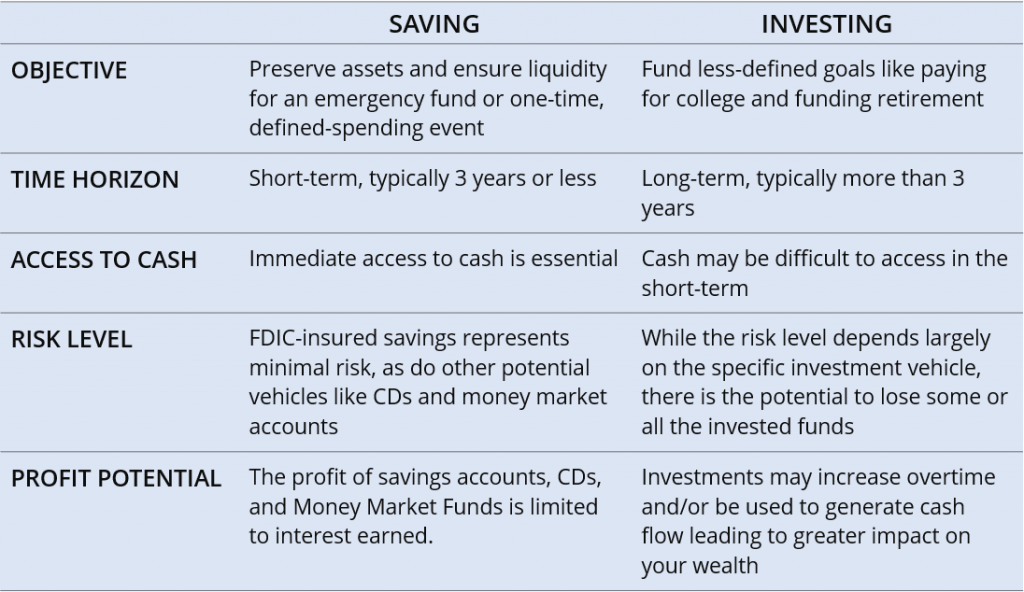A mistake far too many people make is to invest money they should be saving and save money that they should be investing. In our continuation of the discussion of Snider Advisors’ Guiding Principles, we will examine the principle that investing is not the same thing as saving.
While saving and investing are certainly interrelated, they are also independent processes that serve two specific roles in creating financial success.
The Differences Between Saving and Investing
To start our discussion, let’s look at the basic differences between saving and investing:

As you can see, saving and investing have very unique characteristics, which are rooted in their basic objectives.
The Purpose of Saving
The purpose of saving is to accumulate and protect funds that have a high need for liquidity. Money you need to spend in the short run should sit in a financial vehicle where it’s easy to get to your money without taking a loss. The volatile nature of the stock market excludes it from being appropriate for money you need to access quickly.
Here is an example. Let’s say you’ve set aside $50,000 to spend on your daughter’s wedding next year. In the meantime, you decide to use that money to buy stock, so you buy $50,000 worth of XYZ shares. But right before the wedding, XYZ is involved in a lawsuit, doesn’t make earnings, or there’s another financial crisis, and the value of your stock drops by 50%. Suddenly, your $50,000 becomes $25,000.
Sure, XYZ will most likely recover in the future, but chances of it making a full recovery in time for your little girl’s big day are pretty darn slim. In this situation, there is no question that you would have been better off putting that money in a savings account.
The current state of interest rates will only allow for minimal growth of your $50,000, but’s that’s okay because your objective here isn’t growth; it is to keep your money safe and readily available.

The Peril of Saving
Investing money you should save is the first mistake, but it is equally as detrimental to save money you should invest. Money needed for long-term goals like retirement should not sit in a savings account. Because you have a long time horizon and this is not money you need to access immediately, you will be able to ride out short-term fluctuations in the market. Letting this money sit in a low interest earning account significantly prohibits its potential for growth and can be a colossal error.
Snider Investment Method
Not all investment strategies or vehicles are created equal. Make sure that you find one that correlates to your objectives, time horizon, and risk tolerance. The Snider Investment Method is a long-term investment strategy that uses a uniquely powerful combination of stocks, options, and cash management techniques.
We screen for stocks from fundamentally sound companies that we would be willing to own for long periods of time, even if the price declines. The Snider Method also helps you manage your emotions, enabling you to keep short-term price fluctuations in perspective so that you have the greatest chance possible of meeting your long-term objectives.
To learn more about Snider Advisors read about another one of our Guiding Principles and see why we believe that the number one job of your portfolio is to produce a paycheck. Click here to read more.




